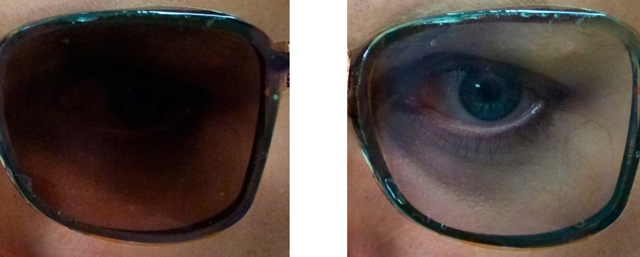A group of Georgia Tech researchers have designed eyeglasses which can change from clear to shaded under the wearer's control, rather than based on ambient light conditions.
 A new kind of glasses go from clear to shaded on command. (Photo Credit: American Chemical Society)
A new kind of glasses go from clear to shaded on command. (Photo Credit: American Chemical Society)
The results of the study, led by Anna Österholm in John Reynolds' group, have been published in the journal ACS Applied Materials & Interfaces. The researchers believe that these eyeglasses will be especially helpful for pilots, security guards and other users who rely on optimal vision.
The majority of transitional lenses available in the market are "photochromic" - this means that they become darker when exposed to bright light, and clear when they are in a dimmer environment. However, this simple response fails in a number of common situations.
For instance, when wearers have a baseball cap on or are driving, the eyeglasses remain clear instead of changing into a darker shade, even in bright daylight. Furthermore, many available eyeglasses versions do not have the capability to obstruct the brightest light, such as the intense white light reflected off snow.
Since in these conventional models, the transition from shaded to clear tends to take several minutes, this could have serious safety implications for specific wearers like airline pilots. Thus the Reynolds’ team wanted to find a solution to these challenges.
The newly designed lens has the ability to change in seconds from clear to darkly shaded and vice versa, based on a tiny electrical charge that the wearer could be in control of. Also, the lens color can be fine-tuned to match the variety of hues available in commercial sunglasses.
This is achieved by color-mixing of four electrochromic polymers, which give colors of yellow, cyan, orange and blue individually, but can be combined to give a full range of different brown shades to suit the environment and the user's tastes.
The John Reynolds' team believes that the lenses can be easily manufactured on a large scale, as the polymers are solution-processable. The prototypes were manufactured using inkjet printing and blade-coatingmethod they used is simple to replicate.
Sources and further reading
Eyeglasses that turn into sunglasses — at your command - ACS Press Room
"Four Shades of Brown: Tuning of Electrochromic Polymer Blends Toward High-Contrast Eyewear" - A. M. Oesterholm et al, ACS Appl. Mater. Interfaces, 2015